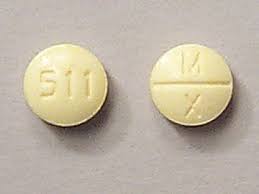The targeted agent nilotinib (AMN107) appears to offer striking benefits in patients with chronic myelogenous leukemia (CML) who are resistant to Gleevec, the standard therapy for this cancer, say researchers at The University of Texas M. D. Anderson Cancer Center.

Results of a 119-patient, phase I dose-escalation study, published June 15 in The New England Journal of Medicine, show that nilotinib offers a relatively favorable safety profile and obvious activity, researchers say, even though the study was not designed to measure the agent's effectiveness.
"We are very excited about this drug," says the study's lead investigator, Hagop Kantarjian, M.D., professor and chair of the Department of Leukemia. "With it, I believe we are going to make another quantum leap in the treatment of CML, allowing us to treat our patients according to their cancer's distinct molecular signature."
Nilotinib is the younger sibling of Gleevec, both of which were developed by Novartis Pharmaceuticals Corporation, which also funded the study. Preclinical studies have shown that nilotinib, which is administered in pill form, is up to 50 times more potent than Gleevec because it was designed to more efficiently bind to, and shut down, the protein enzyme responsible for the disease.
v The June 15 NEJM also includes a report on a phase 1 clinical trial for dasatinib, a medication developed by Bristol-Myers Squibb for CML and acute lymphoblastic leukemia, and an editorial noting the importance of both papers' findings for CML patients and for swift, targeted drug development based on an understanding of cancer at the molecular level.
While Kantarjian notes that nilotinib seems to have fewer side effects than Gleevec, which is considered a safe drug, some patients in this trial were found to have abnormal electrical activity in their hearts, and one patient experienced two cardiac events. "We believe this issue is manageable with the right dose of nilotinib and with careful monitoring, but of course we want to test the agent further to make sure it is 100 percent safe," he says.
"At this point, Gleevec should remain the standard of care," Kantarjian says. "For CML patients who respond to Gleevec, and most of them do, 93 percent are doing well five years after treatment."
The study, which included researchers and patients from M. D. Anderson, the University of Frankfurt and Heidelberg University in Germany, and the H. Lee Moffitt Cancer Center, tested nilotinib in Gleevec-resistant patients who had little or no other treatment options available to them.
The participants had either CML or "Philadelphia-positive" acute lymphocytic leukemia (ALL). These diseases are caused by the swapping of genetic material in bone marrow stem cells, which results in an abnormality called the Philadelphia chromosome, and creation of a new gene. This gene produces the fusion protein, BCR-ABL, which leads to development of leukemia. Gleevec and nilotinib both bind to, and inactivate, BCR-ABL.
In the trial, researchers continually increased the dose of nilotinib from a low of 50 mg. to as much as 1,200 mg. daily in some patients.
Nilotinib improved outcomes in all three forms of CML, and was most effective in treating chronic phase CML, Kantarjian says. Of the 12 patients in this category, 11 had a complete hematological remission of their cancer, meaning a disappearance of all findings consistent with advanced stage CML, and return of blood counts to normal.
A total of 13 of 33 patients in the blastic phase of the disease disease - the most advanced stage - had a hematological response (defined as control of white blood cell counts), and 9 had a cytogenetic response (elimination of cells with the cancer-causing defect). Of 46 patients in the accelerated phase, 33 had a hematological response and 22 had a cytogenetic response.
The agent had less activity than expected in patients with ALL. Only 2 of 13 patients responded, and that may be because the cancer was too advanced to be affected by a single drug, Kantarjian said.
The researchers also found that nilotinib's side effects were quite tolerable, and different than those seen with Gleevec. They included myelosuppression (a reduction in the ability of the bone marrow to produce blood cells), transient increases in bilirubin due to breakdown of red blood cells, and skin rashes.
Kantarjian adds that occasional patients experienced an abnormally long "QTcF" interval, a measurement of the time between the onset and the end of electrical activity in the heart's ventricular chamber. Prolongation of this interval is considered a marker of a cardiac arrhythmia. One patient had two adverse cardiac events that were associated with use of nilotinib, and one sudden death was reported in a patient beyond the follow-up time analysis, he says, but the cause of that death is unknown.
"This finding indicates the need for careful monitoring for cardiac events and arrhythmias in all patients who are receiving nilotinib, and a strict avoidance of medications that may prolong the QTcF interval," the researchers write in their paper.
"We would like to see, in the long run, if there are any unusual side effects to nilotinib, and then directly compare it with Gleevec in newly diagnosed CML patients," Kantarjian says. "In the future, nilotinib could possibly emerge as the standard of care."
Co-authors of the study include, from M. D. Anderson: Francis Giles, M.D., Susan O'Brien, M.D., and Jorge Cortes, M.D.; from J. W. Goethe Universitat, Frankfurt: Oliver G. Ottmann, M.D., Lydia Wunderle, M.D., Barbara Wassmann, M.D., and Dieter Hoelzer, M.D.; from Novartis Pharmaceuticals: Chiaki Tanaka, M.D., Paul Manley, M.D., Patricia Rae, William Mietlowski, Ph.D., Kathy Bochinski, Margaret Dugan, M.D., and Leila Alland, M.D.; Andreas Hochhaus, M.D., from the Univeristate Heidelberg; Kapil Bhalla, M.D., from Moffitt Cancer Center; Maher Albitar, M.D., Ph.D., from Quest Diagnostics; and James D. Griffin, from the Dana Farber Cancer Center.
For Further Reading,

